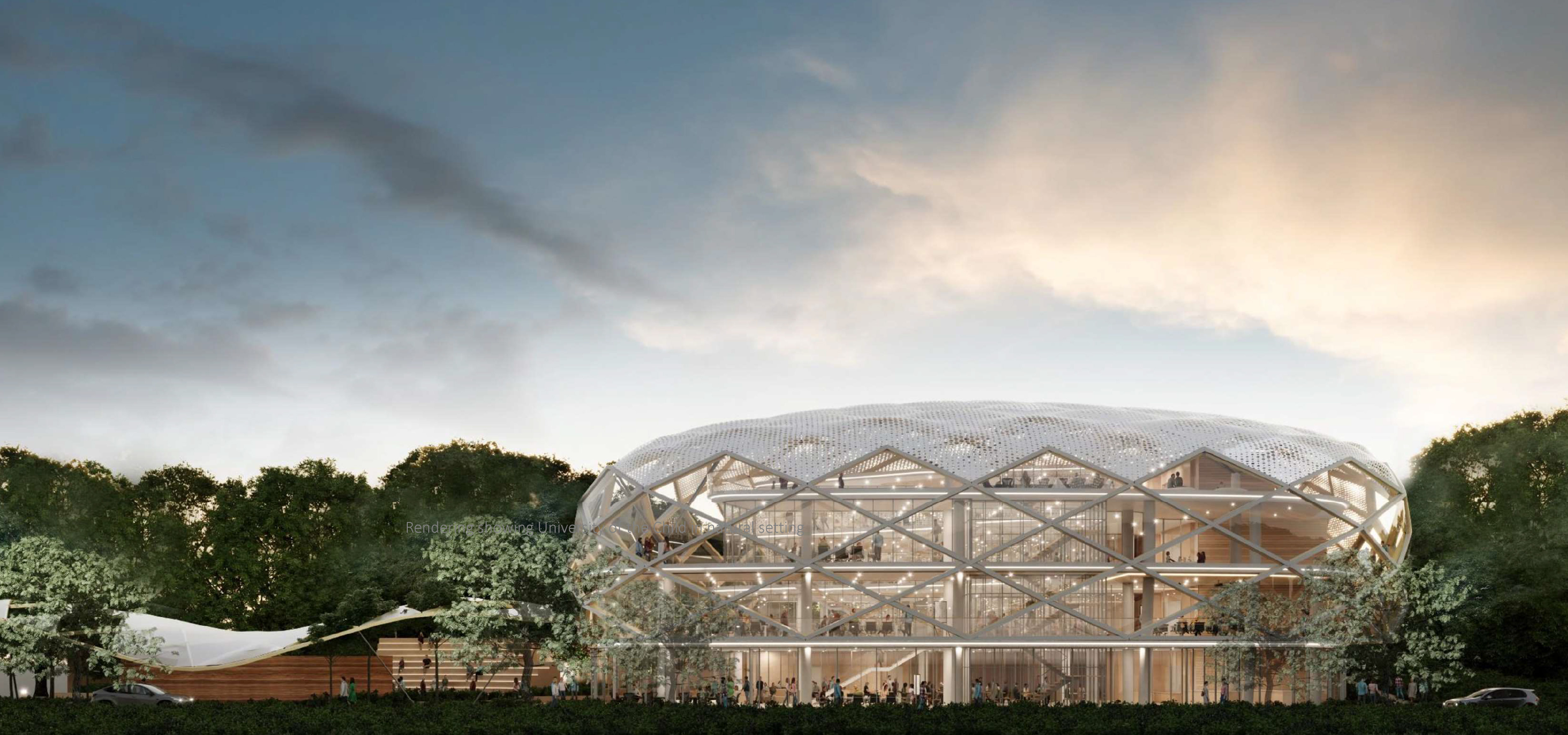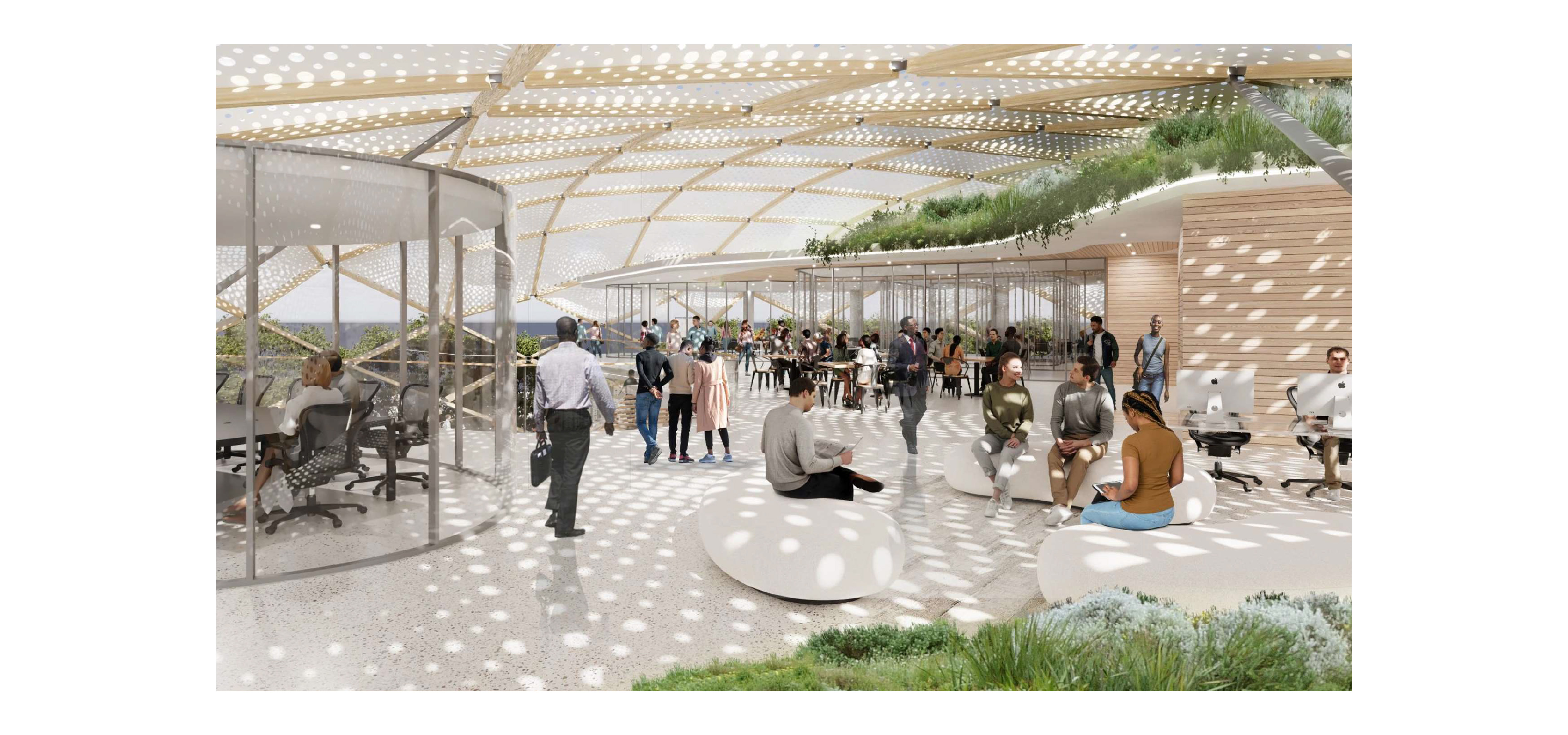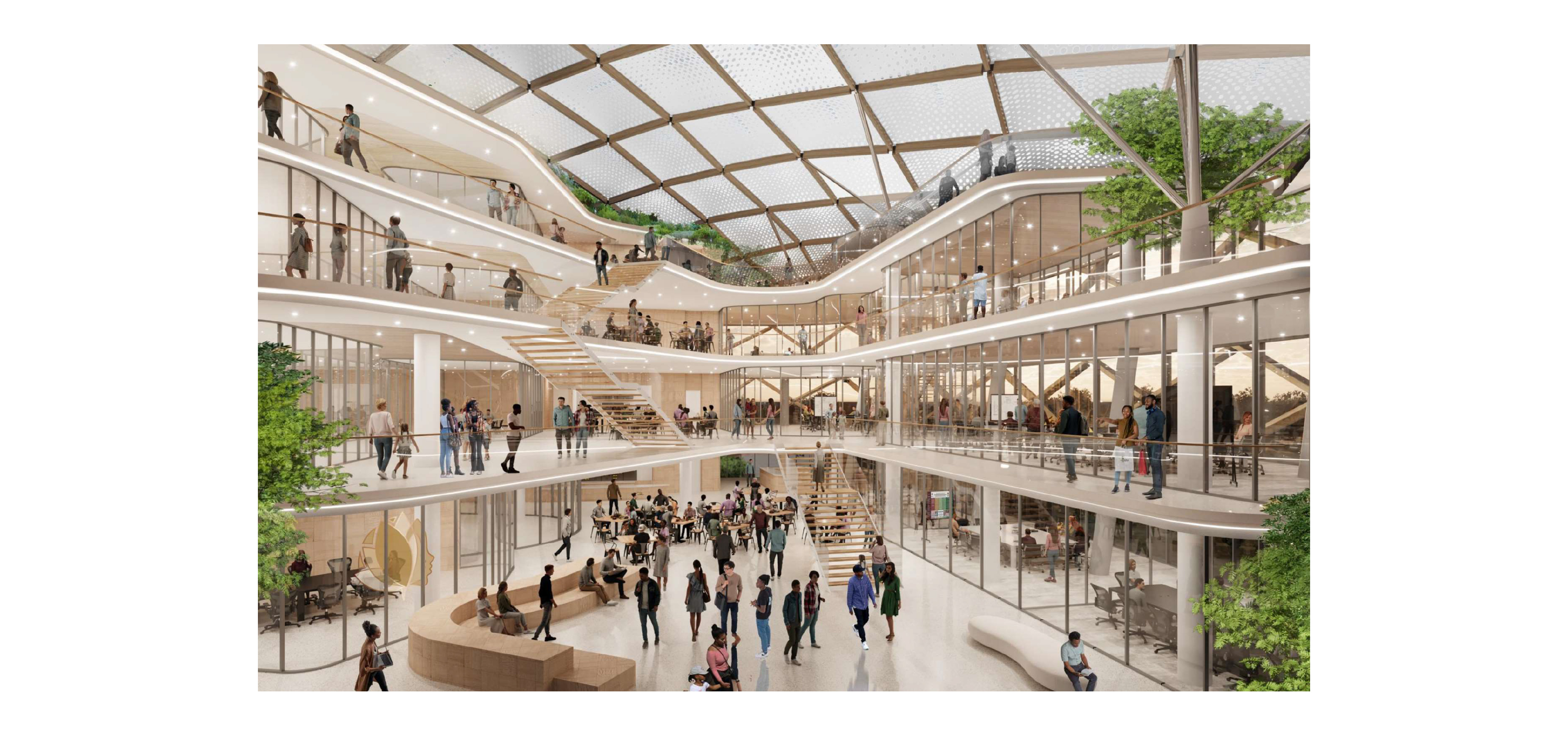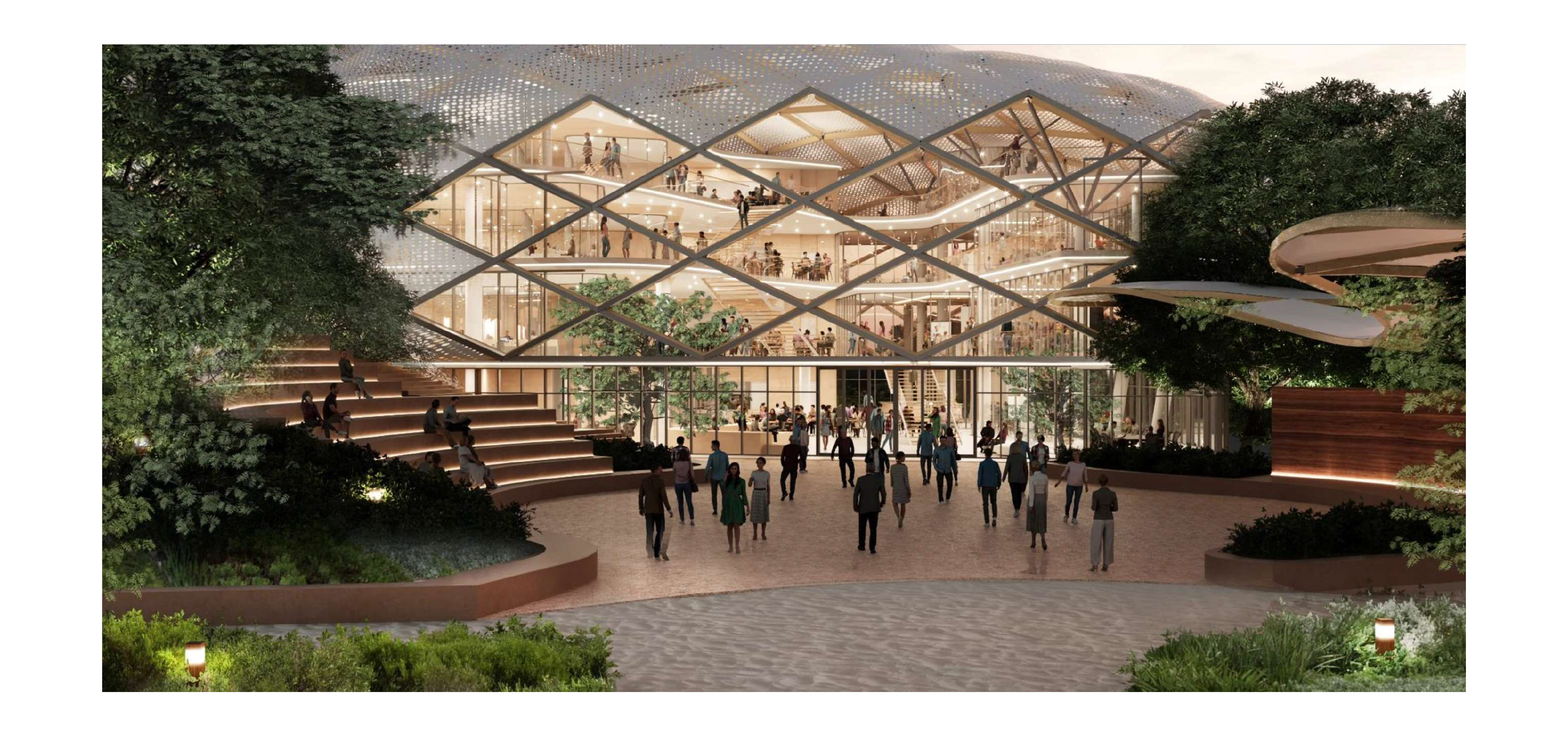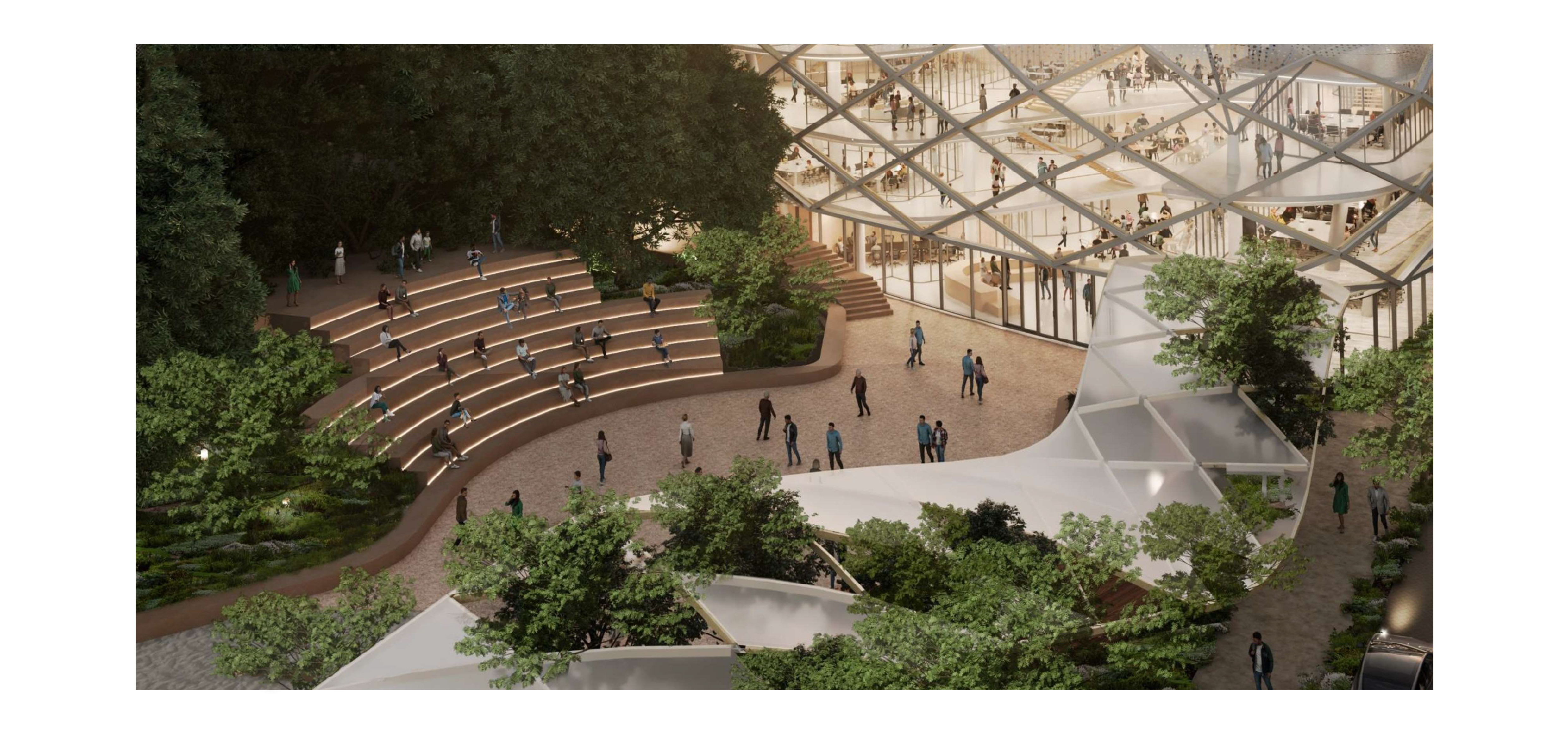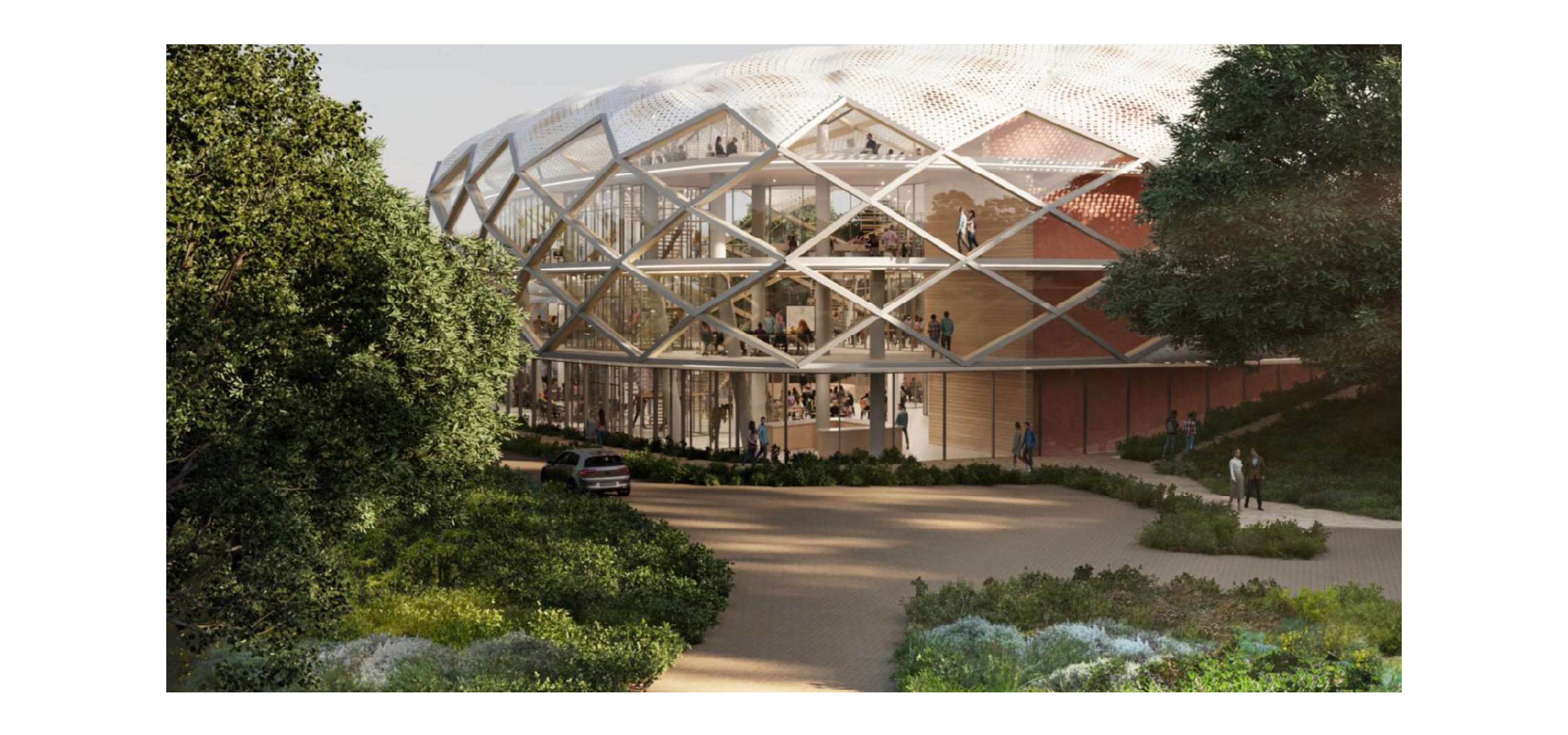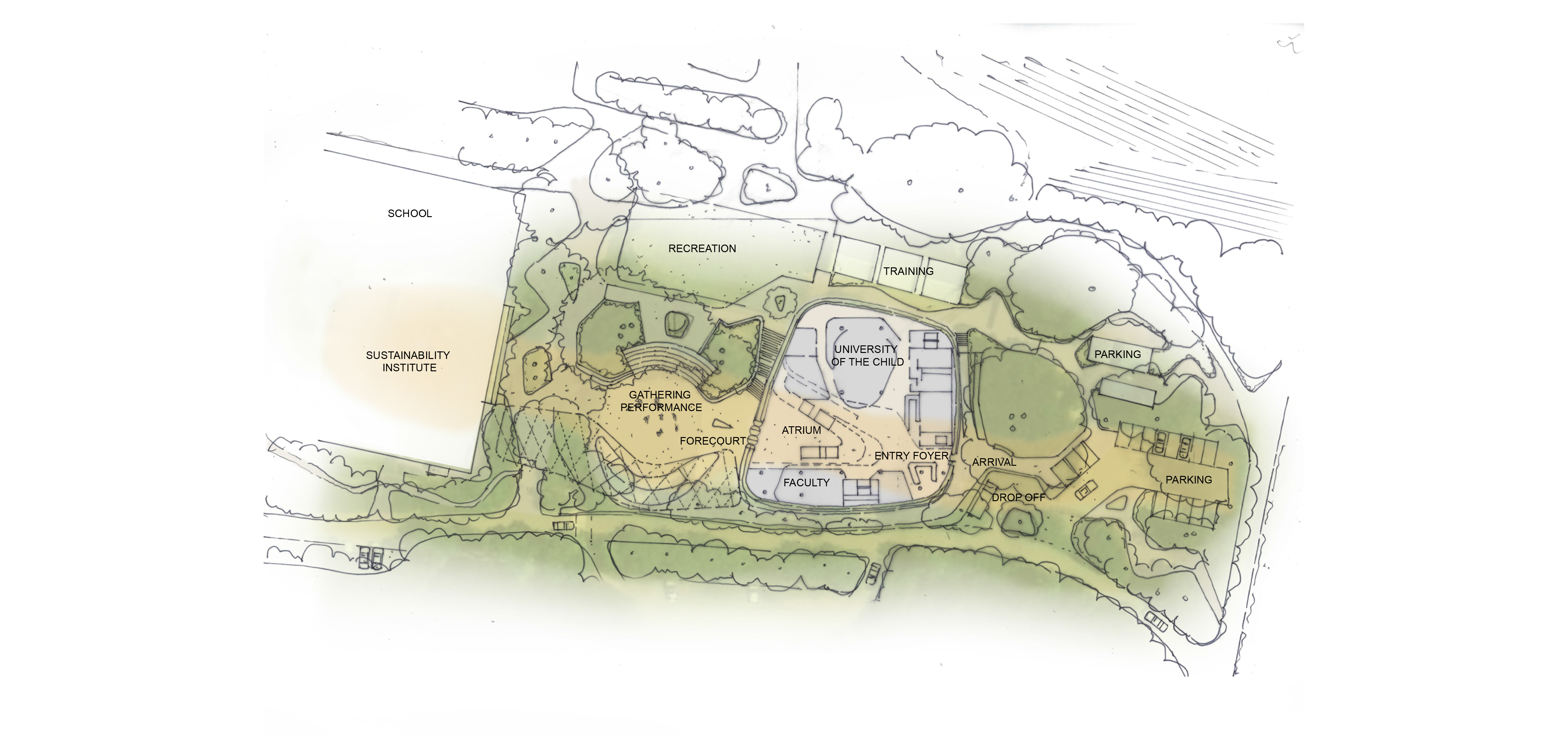The University of the Child project is proposed at Lynedoch near Stellenbosch in the Western Cape Winelands region.
It is proposed that the facility is fully integrated and complementary to the existing facilities on the site which are focussed on sustainability, education-research and childhood development.
The university will be the catalyst for a dynamic educational and child-centric learning environment.
A pedestrian route links the parking and arrival space, passing through the multi-storey atrium of the new building, via an amphitheatre gathering and performance space to the existing Sustainability Institute beyond.
The project is envisaged as a dynamic landmark building and cutting edge research facility dedicated to the needs and future of the Developing Child. Shaped around the natural landscape and existing tree canopy, the campus will constitute world-class teaching and training facilities, conferencing, art, culture and music venues, educational food gardens and a peace-healing centre.
Landscaping, Ecology and Biodiversity
The landscaping and green areas are a key feature of the pedestrian realm, appearance of the building and ecological response.
The concept is to reinforce the east west linkage through the building between the arrival point and the existing Sustainability Institute via a sequence of pedestrian spaces of various scales and enclosures.
The building volume adds a vertical dimension, and a gathering/performance space provides a central focus to the public realm.
The use of green roofs is intended to improve the thermal performance of the building and to give it a signature appearance. In accordance with the approach promoting a commitment to sustainable design & environmental responsibility the treatment of the landscaping of external spaces will therefore reflect a strong response to the local environmental conditions i.e., the hot, dry summer months require water for irrigation to ensure a high quality of vegetation. Domestic water comes at a premium, demanding the use of water-wise indigenous plant species. Other landscape responses include indoor trees and planting for access to green space within the building envelope, deciduous trees used selectively to provide shade and reduce heat reflection to the lower floors of the complex and its outdoor social spaces. Soft landscaping berms will be planted with a matrix of indigenous species to encourage biodiversity and to protect nutrients held in the biomass.
Permeable paving materials will be selected, where possible, to minimize run-off and increase the retention of groundwater levels.
The project is subject to fund-raising initiatives commenced mid 2023.
Renders by SH Architectural Consulting.

